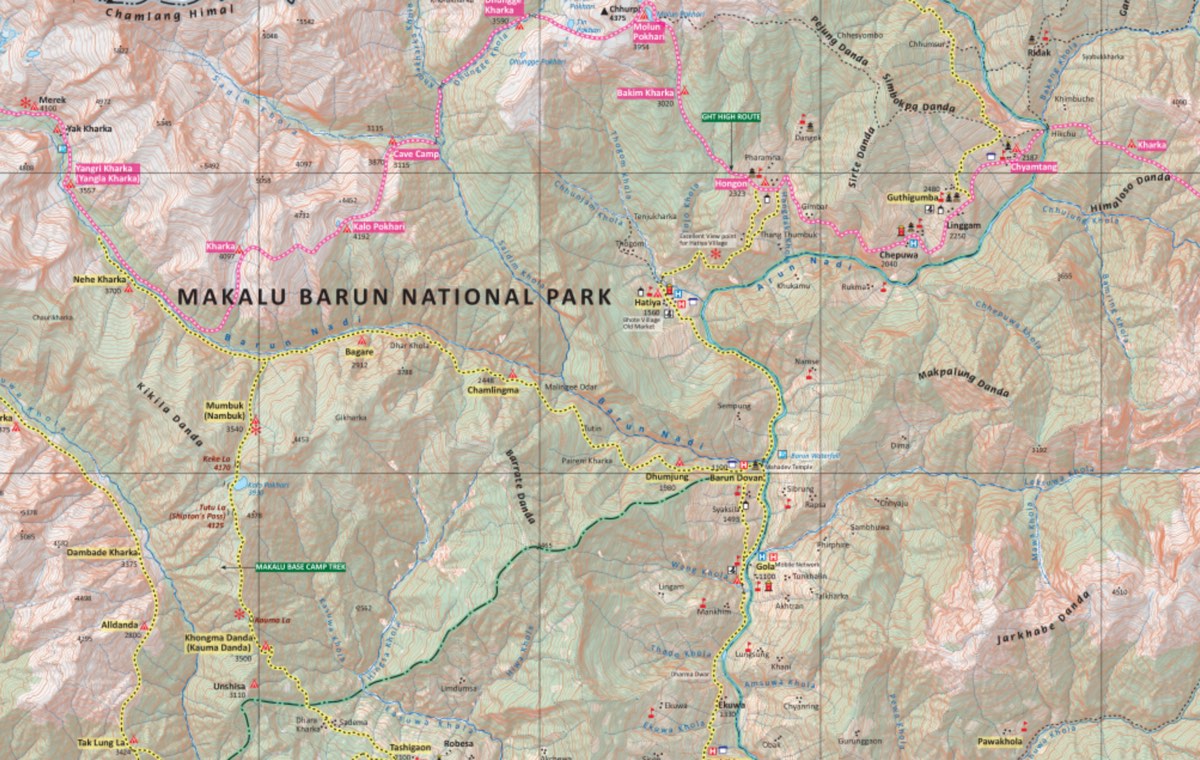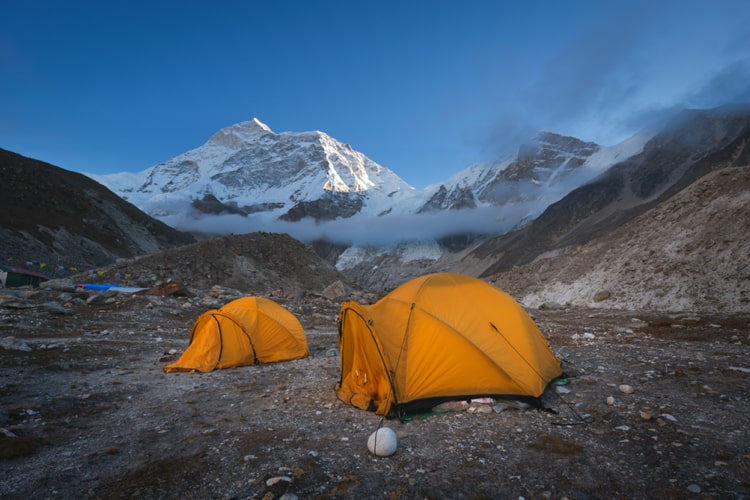Makalu Base Camp Trek
- Satisfied Client
- Personalised Guide
- Instant Response
Get USD 40 off your booking with promo code MNMBCT60
Get Instant Response:
+977-9851329446 (Whatsapp)
| Starts at: Tumlingtar | Ends at: Tumlingtar |
| Trek Region: Makalu Region | Transport: Flight |
| Duration: 19 days | Trip Grade: Strenuous |
| Max Altitude: 5100 m / 16732 ft | Accommodation: Teahouse |
The Makalu Base Camp trek begins from Tumlingtar in the mid-eastern region. This is a high altitude trek, which takes in lower landscapes of lush rhododendron forests, picturesque Gurung villages, river valleys and the Makalu Barun National Park. At higher altitudes, there are breathtaking panoramas of the Himalayas, high altitude lakes, and passes to cross to reach the barn, rocky base camp.
This is a long, varied and quite a strenuous trek suitable for those who are keen trekkers and nature enthusiasts and who would rather be in tranquil, pristine nature than follow the crowds. Makalu Base Camp is situated at 5100m so the long trek through ever-increasing altitude is a great way to slowly acclimatize. The Makalu Base Camp trek begins from Tumlingtar in the mid-eastern region. This is a high altitude trek, which takes in lower landscapes of lush rhododendron forests, picturesque Gurung villages, river valleys and the Makalu Barun National Park.
At higher altitudes, there are breathtaking panoramas of the Himalayas, high altitude lakes, and passes to cross to reach the barn, rocky base camp. This is a long, varied and quite strenuous trek suitable for those who are keen trekkers and nature enthusiasts and who would rather be in tranquil, pristine nature than follow the crowds. Makalu Base Camp is situated at 5100m so the long trek through ever-increasing altitude is a great way to slowly acclimatize.
From base camp the Barun Glacier, the south face of Makalu (8,481m), and a complete panorama of Everest and Lhotse is seen. Time is given to trekkers to explore the lakes and glaciers around base camp before heading down from this icy, rocky land to green forests and valleys again. On the return journey trekkers cross the Tutu La Pass (4,125m) which is now known by the name of Shipton’s Pass.
The Shipton Pass is named after the renowned mountaineer Eric Shipton who was involved with most expeditions to Mount Everest in the 1930’s and who, in 1951, was part of the team that mapped out the now famous route over the Khumbu Glacier.
The Makalu Barun National Park is home to 3,000 species of flowering plants, 440 species of birds and 75 species of mammals including the snow leopard, red panda, musk dear, wild boar, wild yak and the Himalayan Thar. With the possibility of spotting wildlife at lower altitudes, green pastures and fields, villages, and forests, combined with snow-capped mountains, glaciers and rocky trails, this is also ideal photography territory!
Makalu Base Camp Trek Outline Itinerary
Day 1: Kathmandu To Tumlingtar (Flight) to Chichila (Drive)
Chichila – 1980 m / 6496 ft – 4 hrs
Day 2: Chichila To Num
Num – 1040 m / 3412 ft – 6 hrs
Day 3: Num to Seduwa
Seduwa – 1500 m / 4921 ft – 6 hrs
Day 4: Seduwa To Tashi Gaon
Tashi Gaon- 2100 m / 6889 ft – 5 hrs
Day 5: Tashi Gaon To Khongma Danda
Khongma Dada – 3500 m / 11482 ft – 7 hrs
Day 6: Acclimatization Day
Khongma Dada- 3500 m / 11482 ft – 2 hrs
Day 7: Khongma Danda To Dobato
Dobato – 3500 m / 11482 ft – 6 hrs
Day 8: Dobato To Yangla Kharka
Yangla Kharka – 3557 m / 11669 ft – 7 hrs
Day 9: Yangla Kharka To Langmale Kharka
Langmale Kharka – 4410 m / 14468 ft – 6 hrs
Day 10:Langmale Kharka To Makalu Base Camp
Makalu Base Camp – 4870 m / 15977 ft – 6 hrs
Day 11: Explore Makalu Base Camp
Makalu Base Camp – 4870 m / 15977 – 3 hrs
Day 12: Makalu Base Camp To Yangla Kharka
Yangla Kharka – 3557 m / 11669 ft – 7 hrs
Day 13: Yangla Kharka to Dobato
Dobato – 3500 m / 11482 ft – 7 hrs
Day 14: Dobato To Khongma Danda
Khongma Danda – 3500 m / 11482 ft – 6 hrs
Day 15: Khongma Danda to Tashi Gaon
Tashi Gaon – 2100 m / 6889 ft – 5 hrs
Day 16: Tashi Gaon to Seduwa
Seduwa – 1500 m / 4921 ft – 5 hrs
Day 17: Seduwa to Num
Num – 1040 m / 3412 ft – 5 hrs
Day 18: Num to Chichila to Tumlingtar (Drive)
Tumlingtar – 1980 m / 6496 ft – 7 hrs
Day 19: Tumlingtar To Kathmandu (Flight)
Kathmandu – 1300 m / 4265 ft – 50 min
Not satisfied with this Itinerary?
Are you interested on planning custom trip? It only takes 2 minutes.
Includes
- 18 nights accommodation in mountain teahouses
- Kathmandu Tumlingtar Kathmandu flight
- Tumlingtar Chichila Tumlingtar local jeep
- Guide for 19 days
- Makalu Barun national park entry permit
- Trekkers information management system card
- 19 x set breakfast, 18 x set lunch and 18 x set dinner while on trek
- One porter for 19 days USD 480 (Optional)
Makalu Base Camp Trek Map

